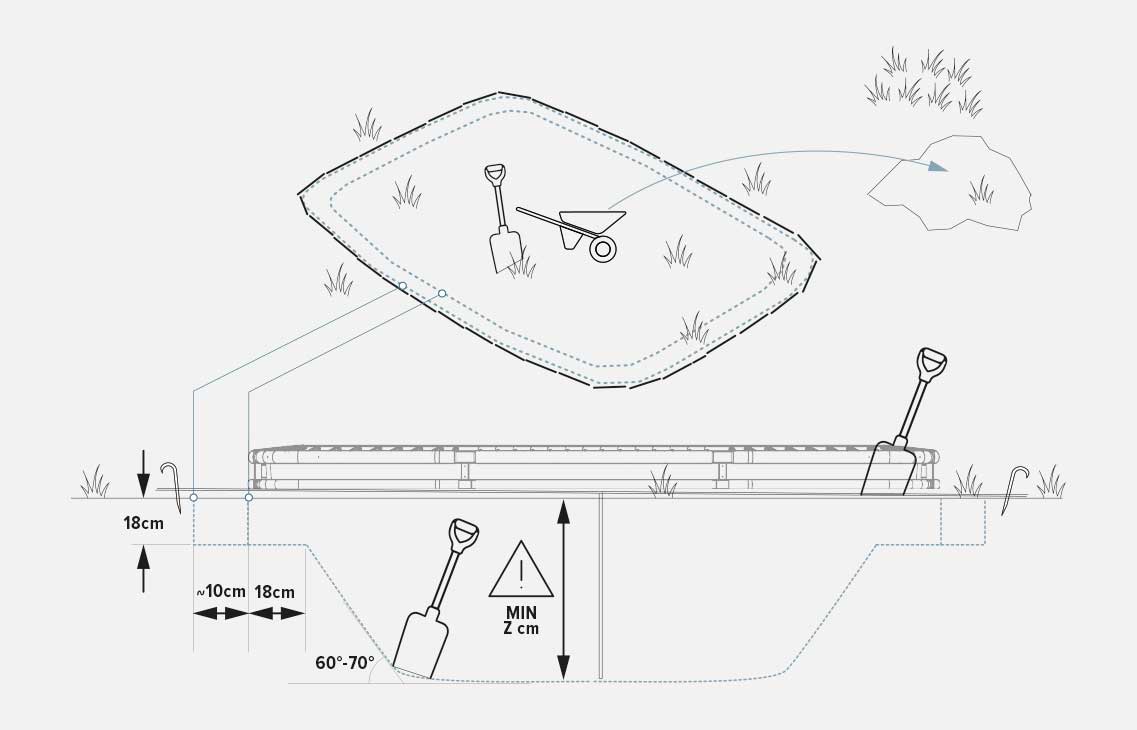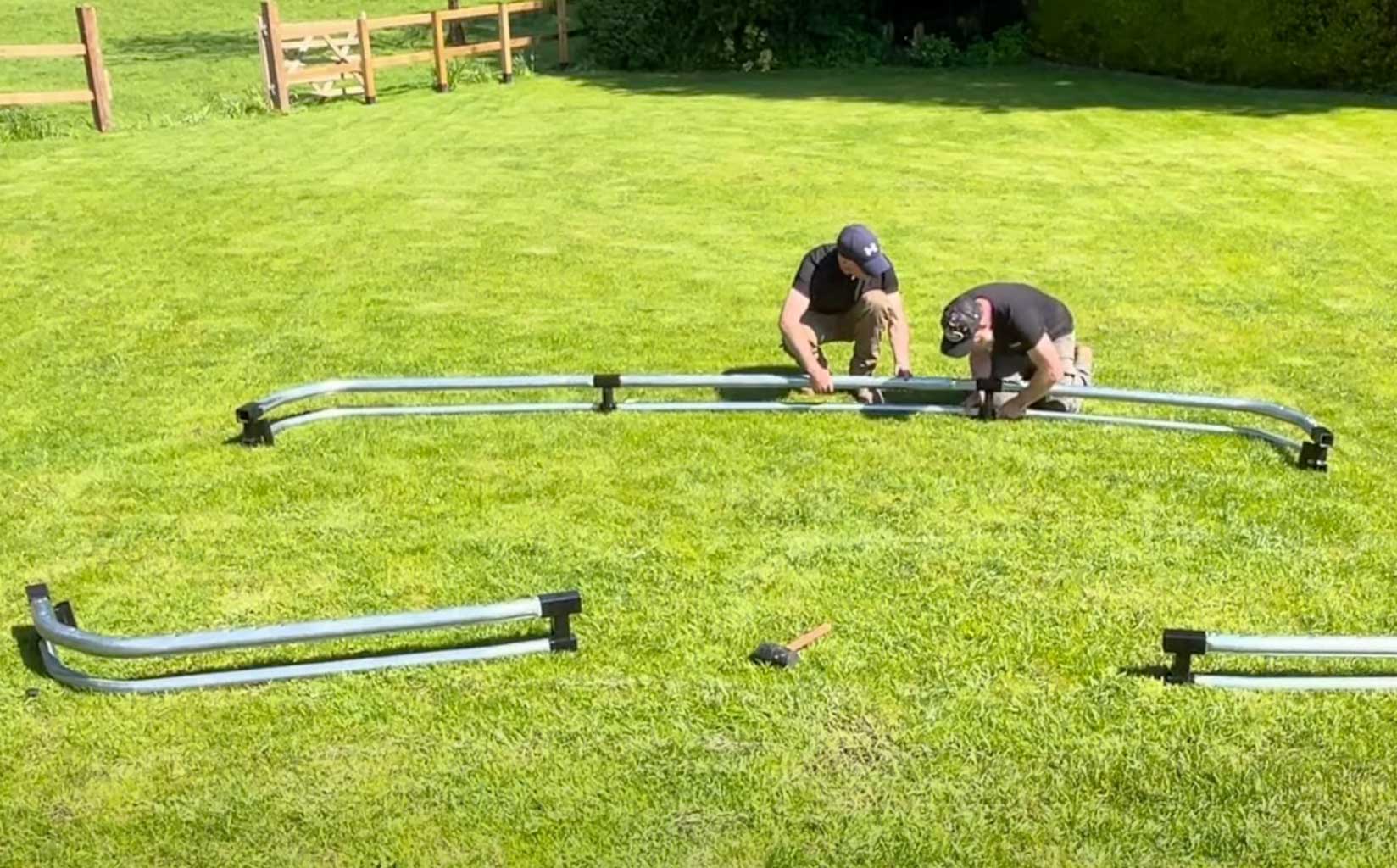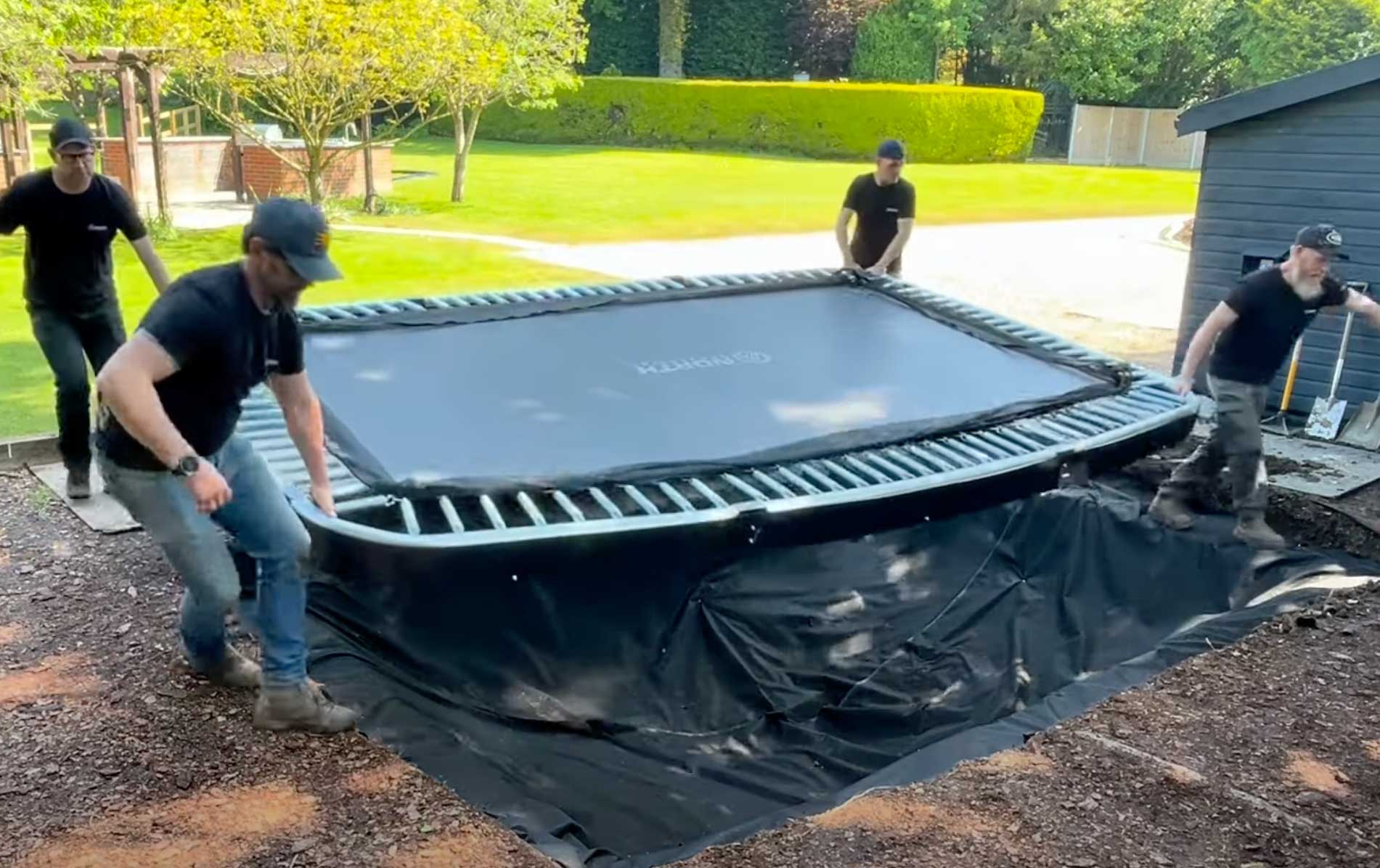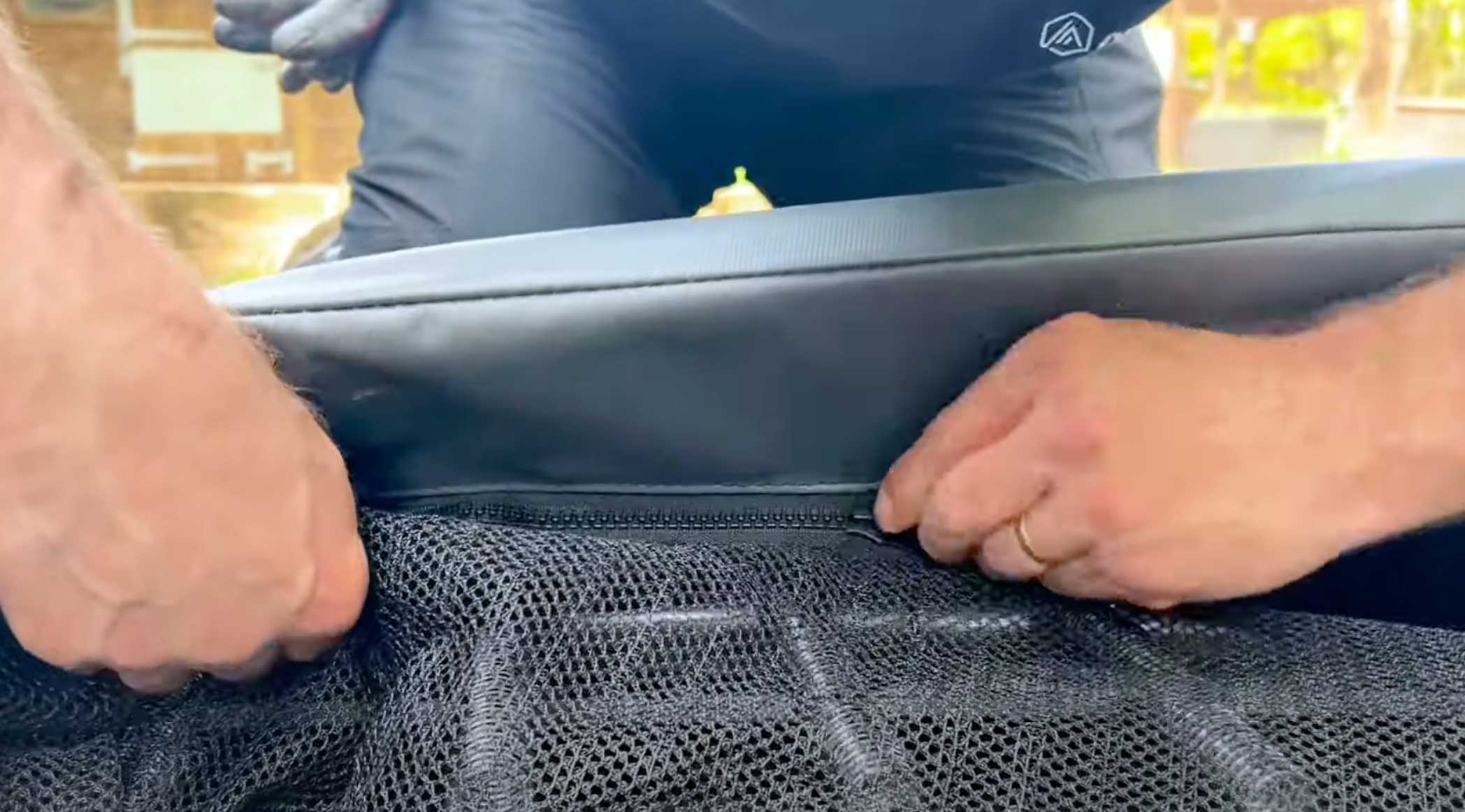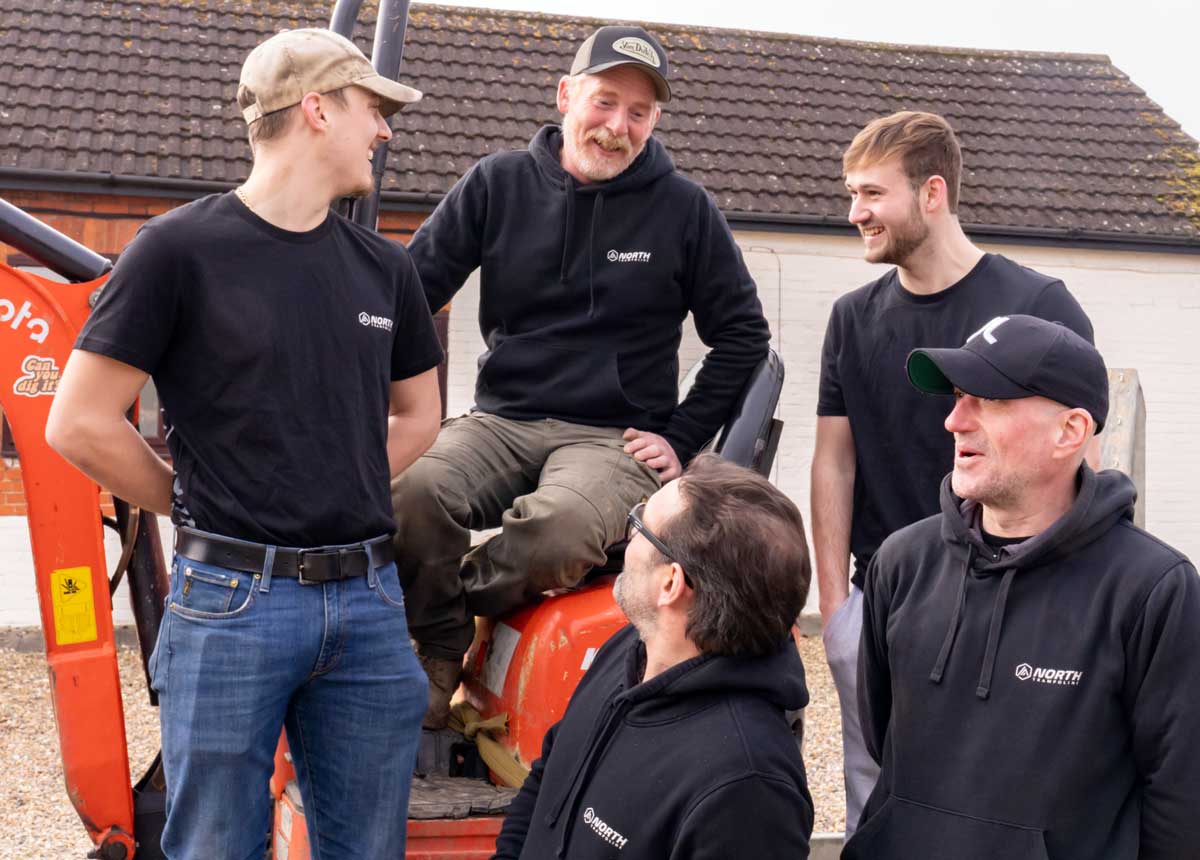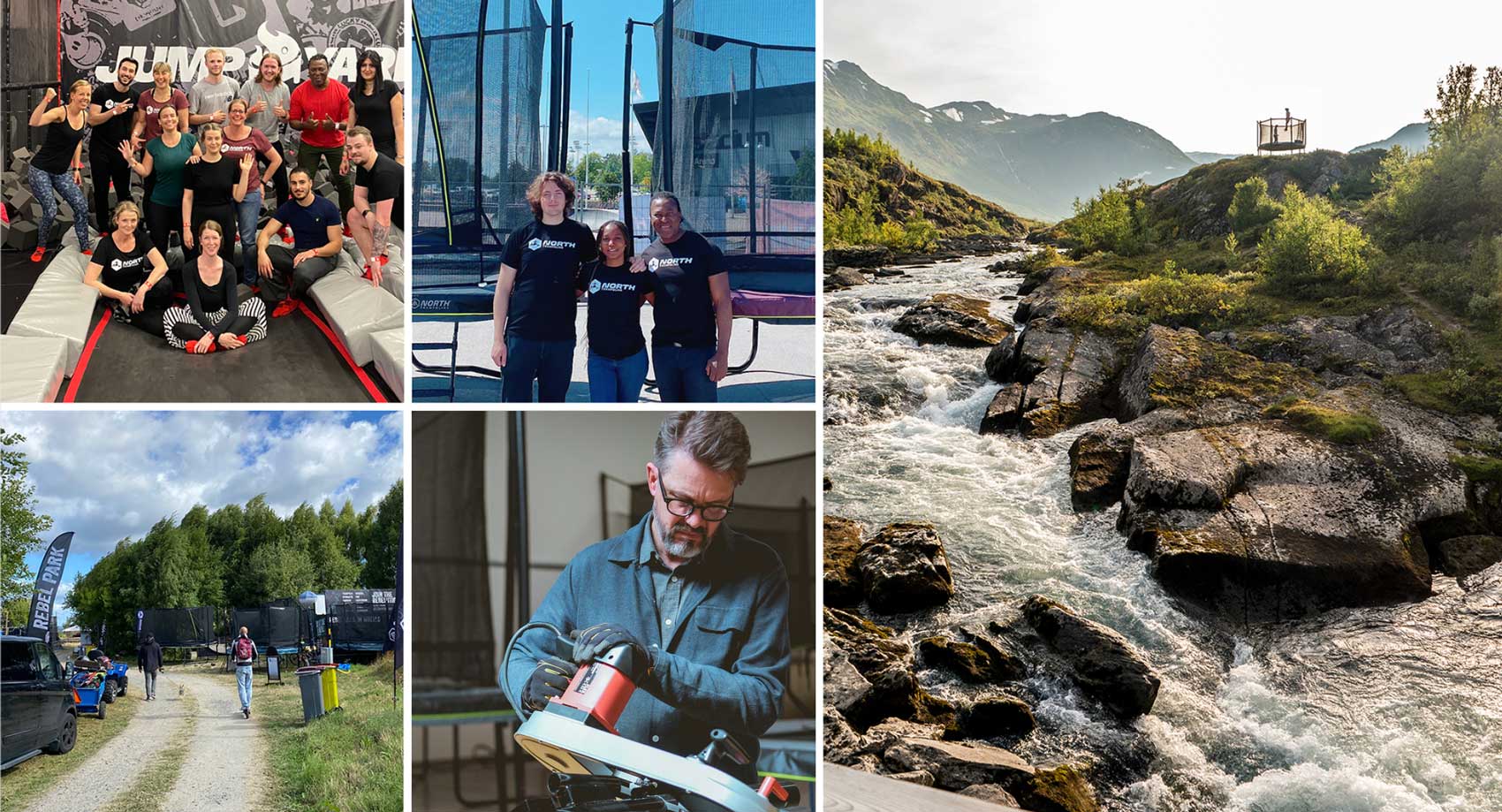North In-ground Trampoline Kits have been designed for ease-of- assembly and DIY install. Over 80% of our customers do the assembly and installation themselves, or with the assistance of family and friends.
Many customers also use local gardening or landscape companies or just employ some local muscle to assist with the digging of the hole.
if you're using a landscaper send them the link to this page so they can watch the explainer video or print off the fully downloadable instructions below.


